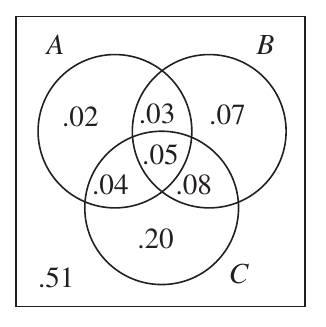Definition of Conditional Probability
In general, calculating
Say there are two assembly lines

Here the probability a line
However if the selected component was defective
Thus we have the following definition:
For any two events
A student at Cal Poly is randomly selected. Let


If the selected student is in
Given that the student is taking at least one of the subjects
If the student is taking a math class, the change of taking one of the other two classes is: